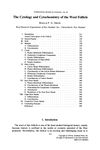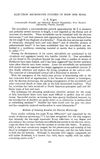TLDR The hair cuticle is made of tough proteins that protect the hair, but more research is needed to fully understand its structure.
The review from May 2019 discussed the structure and function of the hair cuticle, emphasizing its protective role for the inner cortex. It detailed the three layers of the cuticle—A-layer, exocuticle, and endocuticle—and their distinct properties, including high disulphide crosslinking for toughness and the hydrophobic nature due to 18-methyleicosanoic acid (18-MEA). Despite extensive research, some aspects of cuticle structure and development remained unclear, highlighting the need for innovative techniques like TEM autoradiography to study these areas. The review underscored the importance of further research to improve understanding and treatment of hair.
11 citations
,
May 2013 in “Journal of Investigative Dermatology” KRTAP10 proteins help form the hair shaft's tough outer layer by interacting with specific hair keratins.
34 citations
,
September 2007 in “Experimental Dermatology” The outer layer of Merino wool is rich in sulfur proteins, making it resistant to damage.
30 citations
,
January 1994 in “Micron” Mature hair surfaces are formed by keratinized cells with developed layers, not just modified plasma membranes.
 90 citations
,
January 1979 in “International review of cytology”
90 citations
,
January 1979 in “International review of cytology” Wool follicles are complex, involving interactions between different cell types and structures.
138 citations
,
November 1977 in “Biochimica et Biophysica Acta (BBA) - Proteins and Proteomics”  191 citations
,
November 1959 in “Annals of the New York Academy of Sciences”
191 citations
,
November 1959 in “Annals of the New York Academy of Sciences” Hair and wool have complex microscopic structures with microfibrils and varying cystine content.
82 citations
,
November 1959 in “Annals of the New York Academy of Sciences” 34 citations
,
July 1958 in “Biochimica et Biophysica Acta”
36 citations
,
December 1991 in “Journal of Dermatological Science” Human nails contain both skin and hair keratins, each needing different extraction methods.

